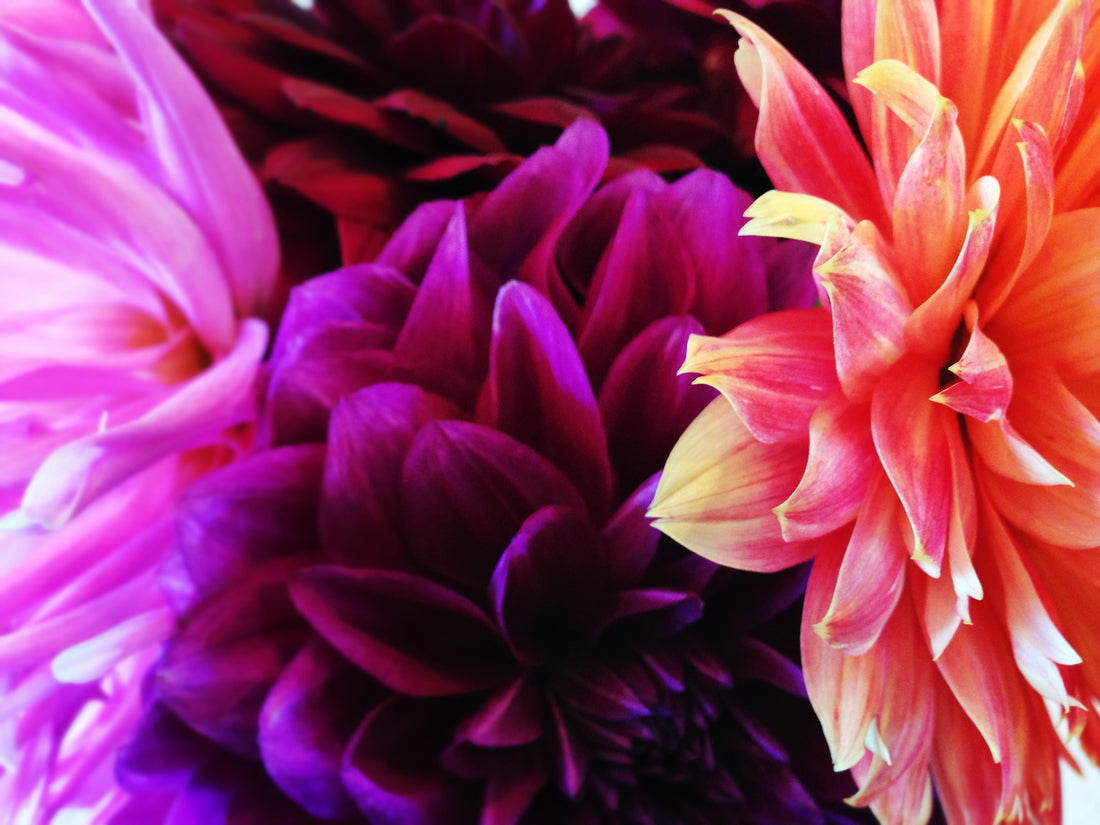
TO DIG OR NOT TO DIG? HOW TO HANDLE BULBS AND TUBERS IN THE FALL
Share
As the crisp air of fall rolls in, it's time to think about what to do with those beloved bulbs and tubers in your garden. If you're like us here on Whidbey Island, you're probably wondering if it’s time to dig them up, let them stay cozy in the ground, or maybe give them some extra love. The answer? It depends on the type of flower and where you live! Let’s dive into what’s best for your tulips, dahlias, daffodils, and other favorites—whether you’re in the Pacific Northwest or somewhere a little warmer.
Tulips: In or Out?
Tulips are a spring garden staple and, lucky for us in the Pacific Northwest, they’re pretty low-maintenance. If you’re living in a mild climate, like here on Whidbey, or even a bit more south toward Seattle, there’s no need to dig them up. Our winters are cold enough for tulips to get the chill they need, but not so harsh that they’ll freeze to death. Just let them rest in the soil, and they’ll pop back up when the weather warms again. However, if you’re gardening in a warmer climate, like zones 8 or higher, tulips might not get the cold they need to bloom next year. In that case, dig them up, store them somewhere cool and dry, and replant in the fall.
Dahlias: Definitely Digging
Dahlias, on the other hand, are a bit more high-maintenance. These showstoppers can’t handle freezing temps, so you’ll want to dig them up once the first frost hits. Here on Whidbey, that’s usually sometime in late fall. Once dug, let them dry out for a few days before storing them in a cool, dry place. Some gardeners like to pack their dahlia tubers in peat moss or sawdust to prevent them from drying out. Just be sure to keep them from freezing! If you’re lucky enough to be gardening in a warmer zone where the ground doesn’t freeze, you can leave your dahlias in the ground, but most gardeners still recommend lifting and storing them just to be safe.
Daffodils: Leave Them Alone
If daffodils are your thing, you’re in luck! These sunny beauties don’t need much care when fall rolls around. Like tulips, they thrive in our Pacific Northwest winters and can be left right where they are. If they start getting crowded over the years, you can divide them, but they don’t need the same kind of attention as dahlias.
Bearded Irises: Divide and Conquer
Bearded irises are another favorite that will benefit from some fall attention. Every few years, you’ll want to dig up the rhizomes (that’s the fancy name for their tubers) and divide them. This keeps your plants healthy and prevents them from becoming overcrowded. After dividing, you can replant them immediately or store them in a cool, dry spot if you’re not quite ready to put them back in the ground.
Tips for Storing Tubers
Whether you're dealing with dahlias, irises, or any other tuber that needs winter storage, there are a few tricks to keep in mind:
- Dry them out: Before storing, let the tubers dry out for a few days to prevent rot.
- Keep them cool: A cool, dark, and dry place is your best bet. Somewhere like a garage or basement (where it won’t freeze) works perfectly.
- Check on them: Throughout the winter, check your stored tubers for any signs of rot or mold and remove any bad ones before they spread to the others.
Wrapping It Up
When it comes to fall and winter garden prep, the key is knowing what your plants need and how your local climate affects them. Here in the Pacific Northwest, we’re lucky that so many of our favorite bulbs and tubers can stay in the ground. But if you're working with tender dahlias or want to divide your bearded irises, a little extra effort now will reward you with a garden that’s even more stunning next spring. Need supplies to get your fall garden chores done? Check out our gardener’s toolbelt, straight shears, bypass pruners, herb snips, seed saving envelopes, and various garden brushes to get your chores done and clean up your garden!
